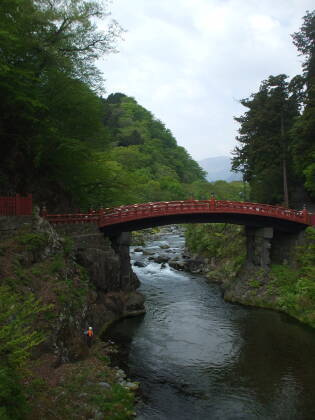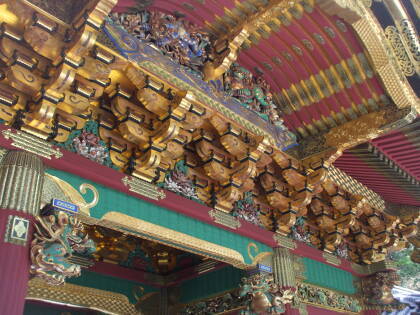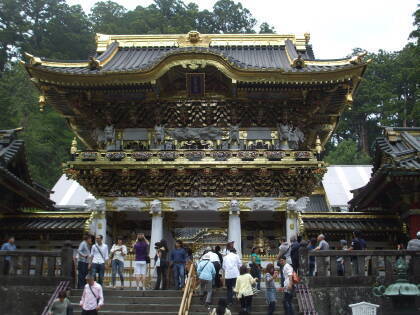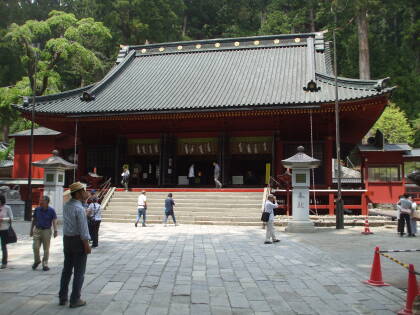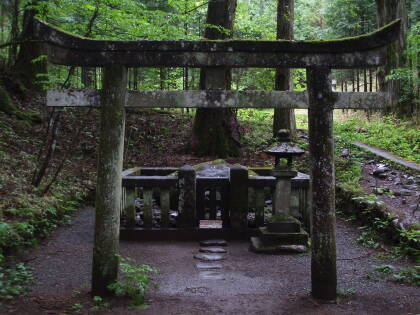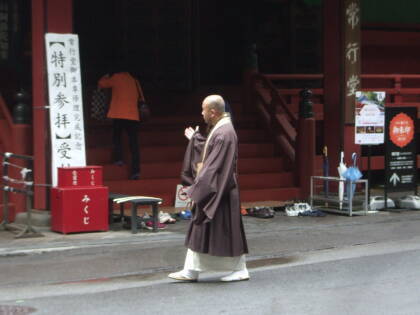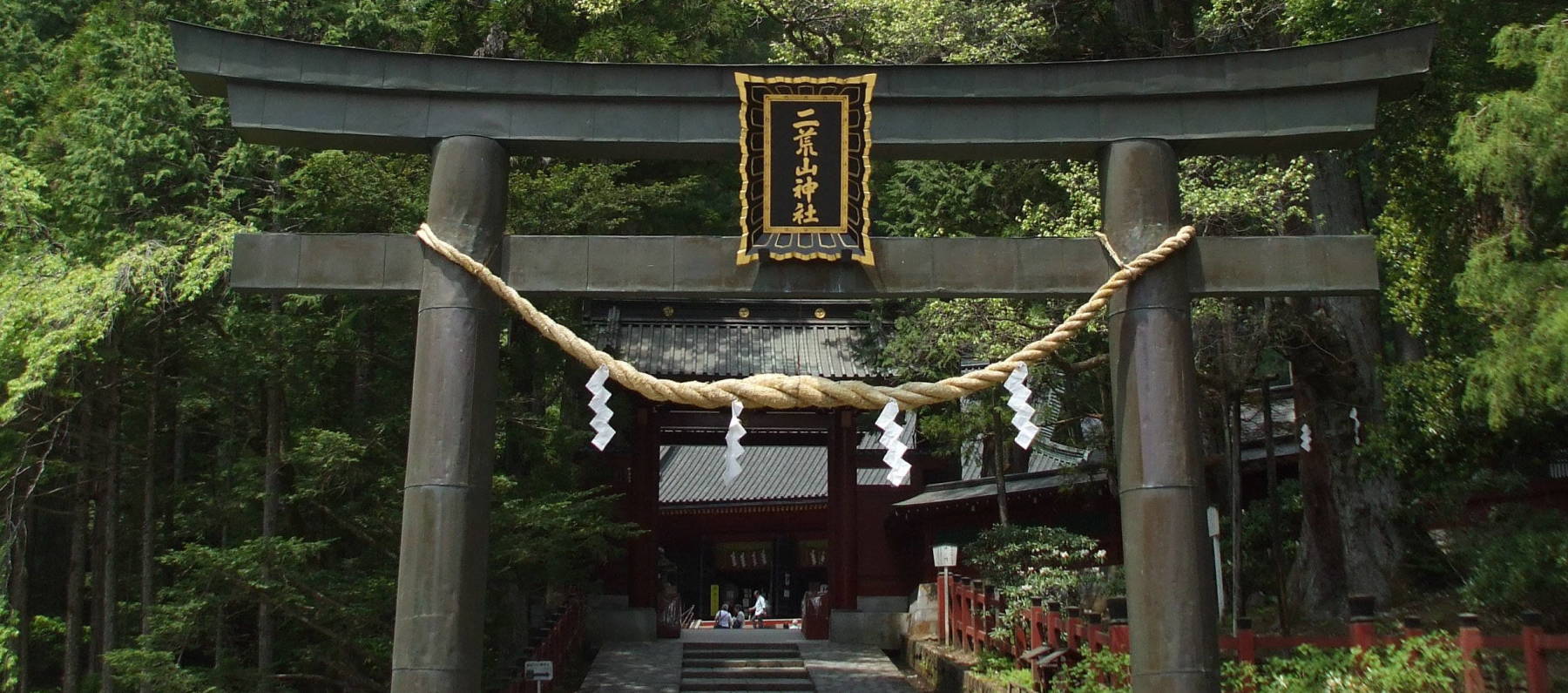
Futarasan Shrine in Nikkō
Futarasan Jinja
Futarasan Jinja is one of the most significant sights at Nikkō. You are overwhelmed by the over-the-top detail and color of the shrines to the two Tokugawa Shōguns. But make sure to visit the Futarasan shrine, located almost between them.
Futarasan enshrines three deities:
Ōkuninushi is the ruler of the unseen world of spirits and magic. He is believed to be a god of nation-building, farming, business, and medicine.
Ajisukitakahikone is a god of thunder. He was the father of Takitsuhiko, a rain god.
Tagorihime is a sea goddess, one of the three main sea deities. She is believed to guard the nation and protect the imperial house, as well as ensure safety at sea and a bountiful catch for fishermen.
The torii marks passage into a more sacred space. The zigzag paper streamers are shide, which can represent the enshrined and invisible kami. A twisted straw rope or shimenawa may hold several shide, as we see here.
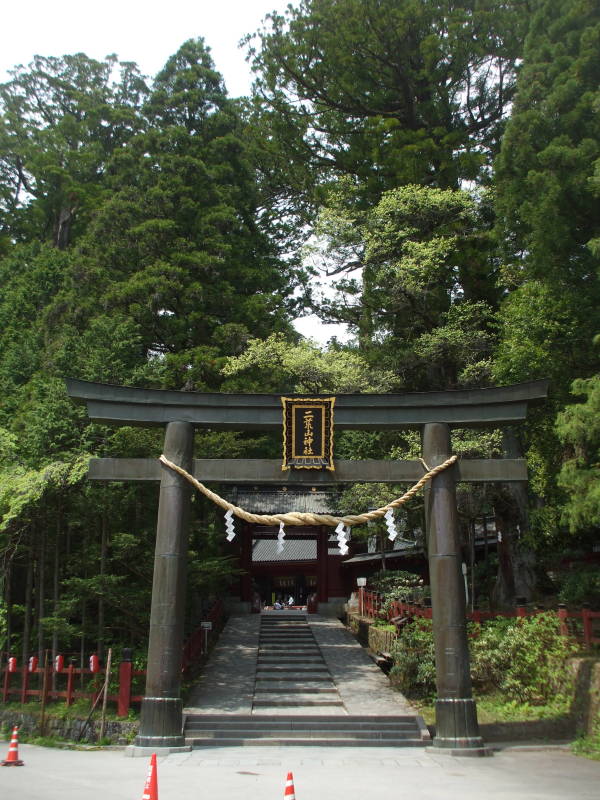
Buddhism
Shintō says that a shrine or jinja houses a kami, a deity or spirit. The concept of kami is difficult to understand. This isn't a god in the same sense that other religions use the term, and certainly not the monotheistic Abrahamic religions. The kami might be a manifestation of nature, even a view of a mountain or the sound of a waterfall.
The shintai, or to use the honorific, the go-shintai, is referred to as literally being the sacred body of the kami, the enshrined deity or spirit. It's the "god-body", the central totemic object normally kept in the most sacred area of a shrine.
However... the go-shintai isn't divine itself. It's a temporary repository of the enshrined kami. It makes the kami accessible to human beings for worship.
During the Yayoi period of 1,000 BCE to 300 CE, the most common go-shintai or repository of the kami would be a nearby mountain peak which supplied water, and therefore life, to the plains below where the people lived.
Futarasan shrine's go-shintai is the nearby Mount Nantai, which provides water through several streams including the Daiya river, spanned by the Shinkyō Bridge that we saw back by the main road and the hostel.
We're approaching the main hall of Futarasan Jinja. The main hall, right through the three open double doors, is the haiden, where ceremonies involving the public may happen. The core of the shrine, the most sacred space, is the honden, where the kami resides and the priests only infrequently visit.

Before visiting we need to visit the ablutions fountain. Shintō refers to the purification rite as temizu, the water-filled reservoir as mizuya or chōzubachi, and the small shelter or pavilion as the chōzuya or temizuya.
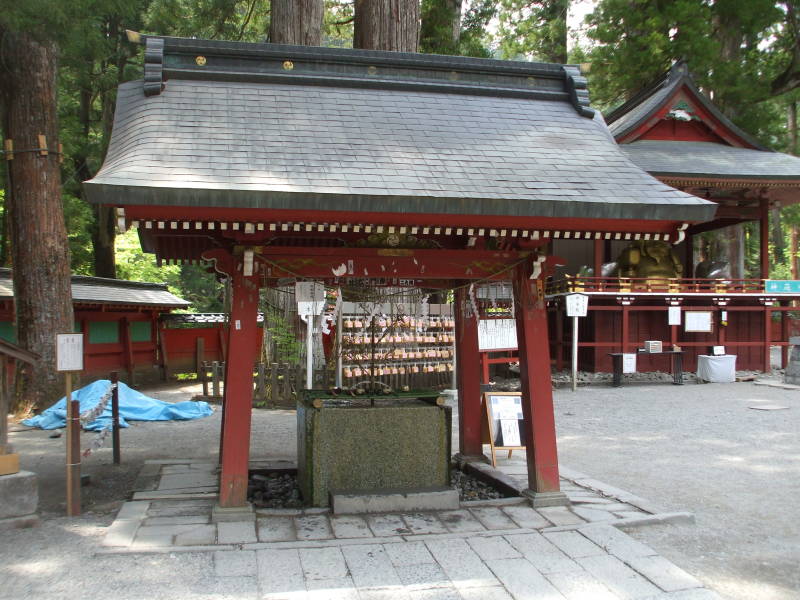
This one has a handy how-to poster.
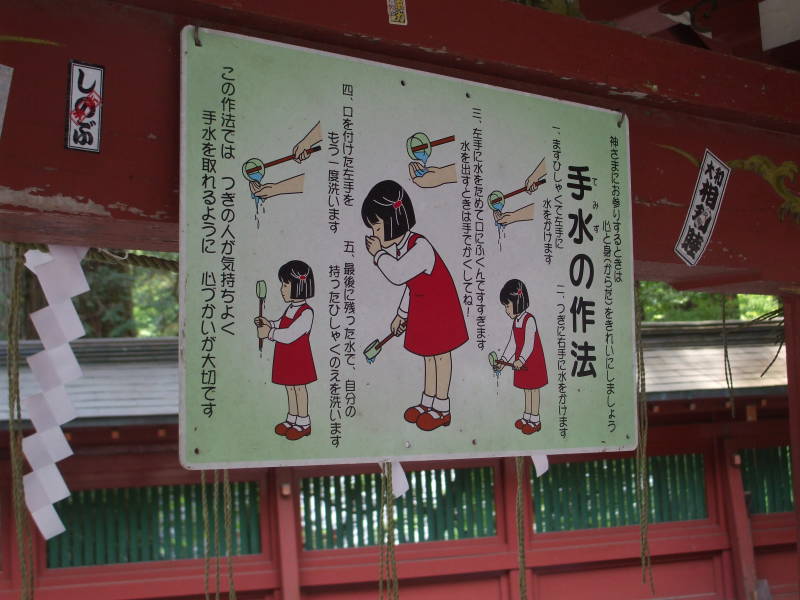
Let's continue our visit to Nikkō.
Choose your next stop around Nikkō:
Or, somewhere else around Japan:


